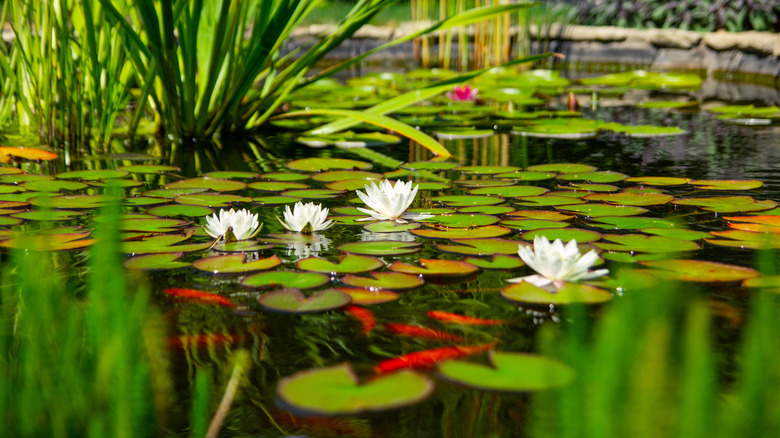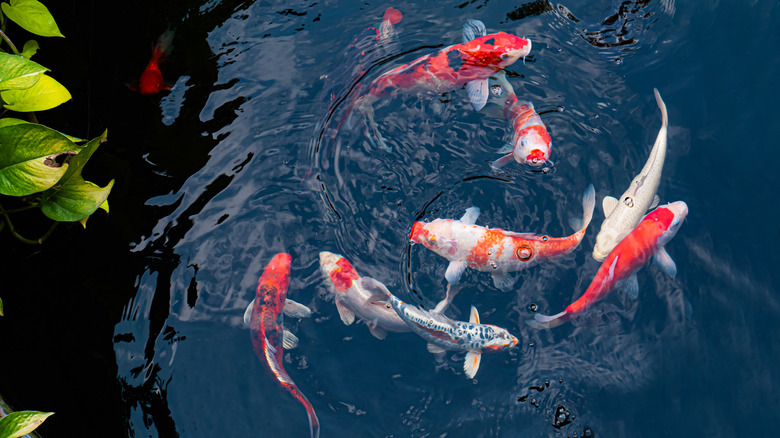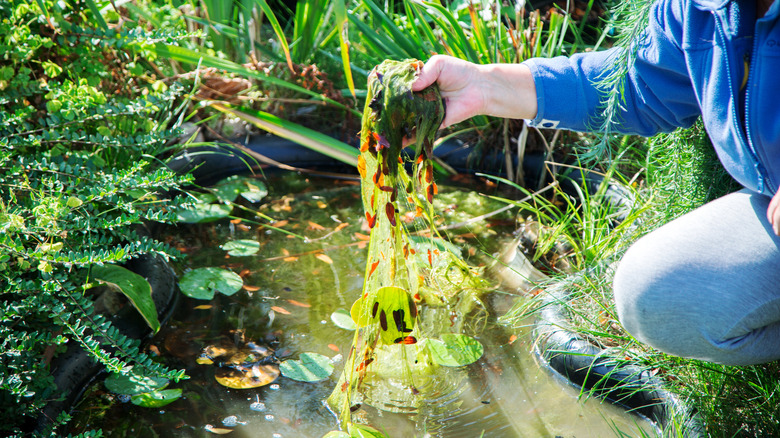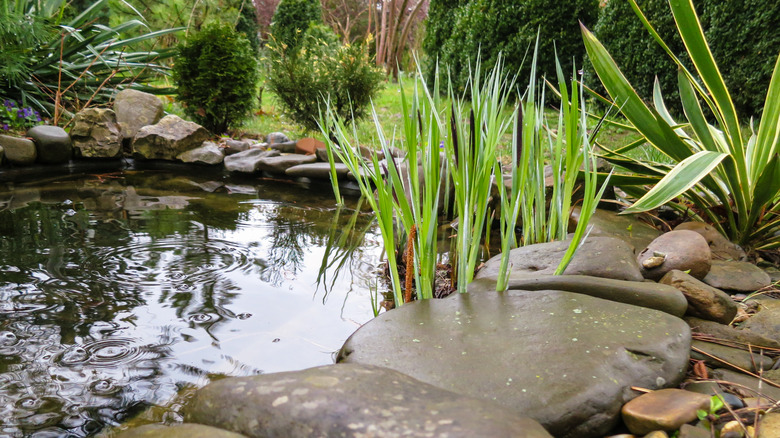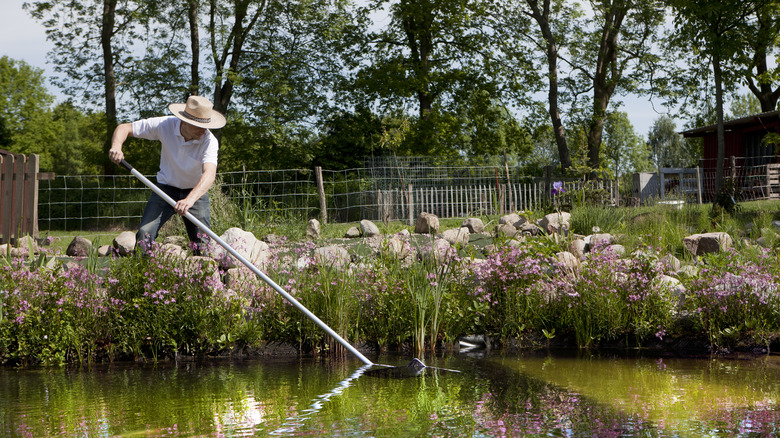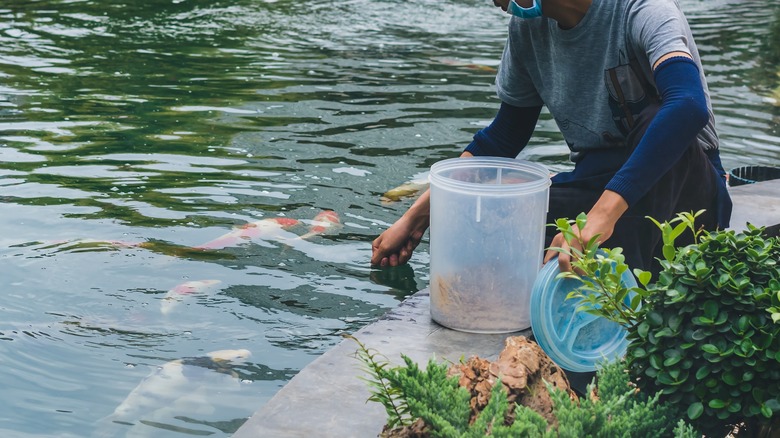How To Prepare Your Outdoor Pond For The Winter Months
Outdoor ponds are a great addition to any home. The combination of a running water feature with tropical plants like water lilies makes them look serene. Plus, if you have fish in your pond, such as koi or goldfish, these are generally low-maintenance pets that need little to no care during winter. Koi ponds not only add to the property value of the home, but they also affect the mood of the homeowners. Reflections explain that these small bodies of water can help people to feel relaxed, rejuvenated, and relieved of stress.
Since ponds aid in uplifting moods, no one wants them to cause unnecessary stress. To be fully prepared for the upcoming winter months, it is better to get your pond ready while the weather is still warm. The water will need cleaning, and the fish will need food to give them the best environment possible for hibernation. Here are the steps you should take to prepare your pond for winter.
Bulk up your fish
Bulking up your fish will help keep them alive throughout winter. Once the cold weather cools the pond water, your fish will not be able to metabolize their food at the same rate as during the summer. During winter, your fish will go into hibernation, so it's crucial to provide them with lots of food before the water reaches 40 degrees Fahrenheit — at this point, they won't be able to digest their food, and all it would do is make the water dirty.
Art of the Yard recommends feeding your fish two to three times a day with a wheat germ-based food that is easier to digest. You'll know it's time to bulk them up when the weather cools to about 70 degrees Fahrenheit. A trick to know if you're overfeeding is to see if your fish can eat everything in five minutes. If they go over the time limit, they are getting too much food.
Remove debris
Removing the debris from your outdoor pond before the water freezes is essential to keep the environment clean and healthy for your hibernating fish. It will also make it easier for you in the springtime because there won't be as much gunk to clean out. Debris, like leaves, twigs, and grass clipping, are likely to fall into your pond during fall and will begin to decompose if they aren't removed. Neave Group Outdoor Solutions explains that the decomposition process adds nitrates and removes the dissolved oxygen in the water, which is dangerous for koi fish.
You can use a long-handled pond net to clean the debris out of your pond. Then you'll be able to get to the bottom of the water without having to drain it. Frequently checking the skimmer basket is also necessary. It will help you to remove anything else you missed. You should clean the basket every couple of days until winter.
Trim back your plants
Trimming the plants in your outdoor pond will help control the amount of debris that falls into the water. Any dead foliage should get cut off and if the whole plant is unsalvageable, uproot it all. Hardy pond plants like lilies and cattails will also go dormant during winter, so removing dead foliage will help them conserve energy. After trimming them, the best thing to do is put the cuttings in a compost pile so you'll have nutrient-rich soil in spring.
Depending on the type of plants you have in your pond, you may need to relocate them during the colder months. Next Day Koi recommends moving tropical plants — such as hyacinths, water lettuce, or tropical lilies – indoors once the weather drops to 50 degrees Fahrenheit or lower. If you leave them outside in winter, they will die and become harmful to any hibernating fish when they decompose.
Install a pond net
Installing a pond net can help you lower the work you must do while preparing for winter. Its job is to catch any debris so that it can be easily removed and won't dirty the water. To use a pond net properly, The Pond Guy explains that you should install it in the fall. Once the leaves start changing colors, it's time to set up the net. However, when winter begins, you need to remove it. Instead of being helpful and catching debris, snow can build up on top of it and cause it to collapse in the water.
While your pond net is still installed, you will need to clean it periodically. There are a couple of methods you can use. The easiest way is to use a leaf blower to remove the debris. Another is to take the net off and dump the contents in the trash or a compost pile. You don't want the debris to build up on top of the net, or there is a risk of it collapsing and harming your fish and plants.
Add cold water bacteria
Making sure that the water in your pond is clean for is the most important preparation for winter. In addition to removing debris and trimming your aquatic plants, you can use additives in the water. During winter, you should switch to cold water bacteria, which will give you a layer of protection from the build-up of decomposing foliage and algae. That way, the water can stay clear and clean, creating a safe environment for your fish.
Splash Supply Company explains that cold water bacteria is needed because its formula was specifically created to work at lower temperatures. It can work in as chilly as 32 degrees Fahrenheit. While usual pond algae won't grow as quickly as in the summer, other species, like string algae, will begin taking over if there is nothing to stop them. Plus, if you miss any debris during fall, the bacteria will break it down, so it doesn't dirty your water.
